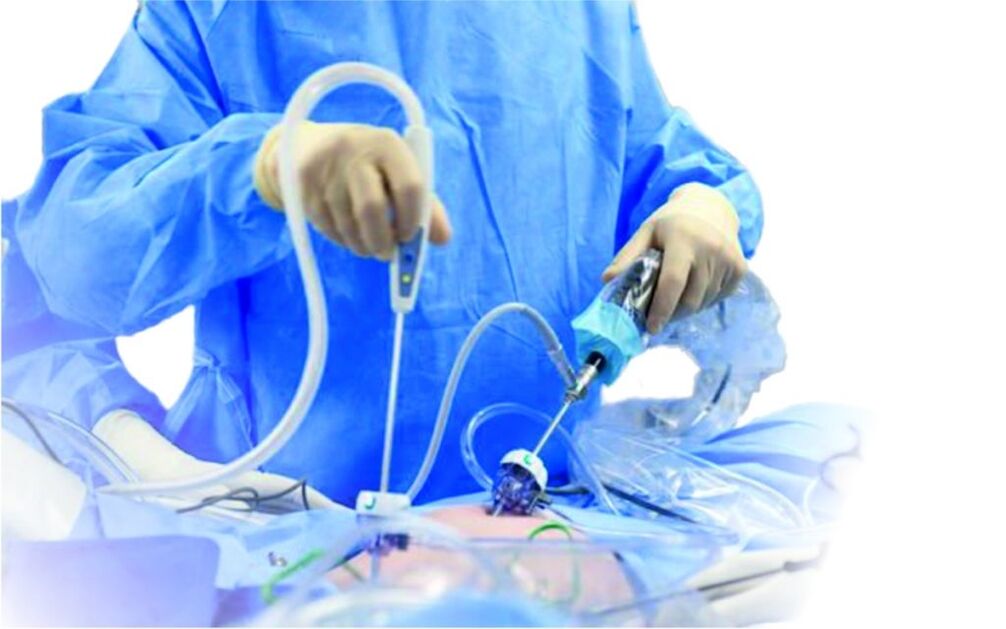Prostatitis is an inflammatory disease of the male prostate gland, which is directly under the bladder and is a secondary part of the genitals.
Every 7 men over the age of 35 suffer from prostatitis and due to each bare risk of developing the inflammatory process in the prostate increases under the influence of external and internal factors.
Causes

Inflammation of the prostate gland can develop for a variety of reasons, doctors distinguish their chief:
- Disruption of blood microcirculation in the pelvic organs - this causes stagnant processes and promotes prostate gland size. Weak processes promote the obesity and behavior of a seductive seductive lifestyle.
- The ambushes of bacteria, viruses or protoosia in the body flows into other organs in the wake of acute or chronic inflammatory processes - diseases such as angina, gonorrhea, urethritis, cystitis, influenza, pyelonephritis can cause prostatitis. Infection -causing agents may enter the prostate with blood flow and lymph if there is infection in the distant areas and organs.
- Injuries and bruises of the abdomen, perinum and external genitals - this causes swelling and blood flow to the bloodstream in the area of injury;
- Hypothermia of the body.
- Chronic constipation.
- Hormonal disorders.
- Hurricane or, on the contrary, the absence of sex life is harmful, both frequent sex (more than 1 time), as well as rare intimate relationships (less often 1 time per week), as it results in a decrease or stagnation of sexual glands in the prostate.
Symptoms of prostatitis
Distinguish between the acute and chronic form of the disease.
Acute prostatitis is characterized by a sudden onset of general well -being, which is clinically accompanied by the following symptoms:
- Coldness and weakness;
- General hardship;
- Irritation and nervousness;
- Increase body temperature (not more than 37. 5 degrees Celsius);
- Pain or cut in lower abdomen and perinum;
- Frequent urination in urine when maintaining an incomplete bladder emptying;
- River pain and difficulties with bowel movements.
In the absence of diagnosis and timely treatment, acute prostatitis can be complicated by the purulent process and the release of the urethra from the urethra.
Signs of chronic prostatitis
When the disease is transmitted to chronic form, the clinical signs of prostatitis stop and the patient seems to be recovering. The characteristic properties of the chronic inflammatory process in the prostate gland are burned along the urethra with irradiation of the vessels, which can be enhanced during urination and defecation. Gradually, the disease progresses and causes impotence. Chronic prostatitis implies periods of remission and exacerbation, but even at times of exacerbation, the symptoms erase, not as pronounced as acute. The following symptoms appear clinically:
- Erection difficulties;
- Inability to end sex with ejaculation;
- Reduction of sexual drive;
- Excretion from the mucus of the urethra with a supplement of white flakes;
- A sense of incomplete emptying of the bladder;
- Pain in the lower back, pub and mulch;
- Weak flow of urine - This is observed as a result of reducing urinary lumen, amid expanded prostate compression.
In the urethra, the chronic sluggish inflammatory process annoys the pelvic nerve endings and provokes permanent urethra, especially at night. Many men find it awkward to see such a delicate problem with your doctor, which increases the risk of serious complications such as complete erectile dysfunction, infertility and prostate cancer.
In addition, from the focus of chronic infection in the prostate, with blood flow and lymph, pathogens enter the kidneys, causing severe inflammation, urinary retention and increased risk of renal failure.
Constant accumulation of urine in the bladder and urethra creates favorable conditions for the formation of salts crystals, and then stones - very often in men, prostatitis is in parallel with urolithysis.
Diagnostic methods
Prostatitis is diagnosed, treated and prevented by a doctor's urologist. To determine the diagnosis, many examinations are prescribed:
- Prostate palpation - performed through the rectum and allows you to detect the size, pain, pus or mucus after palpation;
- Small discharge from the urethra - the resulting material is sent to study in the laboratory;
- Urine analysis is general and a. Sh. ;
- Ultrasound of pelvic organs and prostate glands.
If the abnormal process is suspected of spreading the abnormal process to the patient, the patient is additionally performed by cystoscopy - examination of bladder walls using the end of a flexible device equipped with an optical system.
When diagnosed with prostatitis, it is very important to differentiate the pathological process from prostate adenoma and other urological diseases.
Treat

The treatment of acute and chronic forms of prostatitis is different, so patients are strongly advised not to self -government.
Acute non -bacterial form of prostatitis is treated with comprehensive, herbal drugs and anti -anti -anti -anti -drugs.
Treated with acute bacterial prostatitis
The principles of acute form of bacterial prostatitis therapy depend on how the symptoms of the disease are.
A distinctive feature of bacterial prostatitis is the acute onset of intoxication of the body and the rapidly growing signs - nausea, vomiting, headache, high body temperature. The process of bladder emptying is accompanied by the cutting of pain in the lower abdominal cavity and perinum, which is given the lower back. Very often the purulent process is joined and abscess develops.
Acute bacterial prostatitis is treated in the hospital as the patient's condition can be very serious. Therapy consists of a complex approach:
- The patient should protect the bed rest;
- Antibiotics are prescribed - macrolides, fluorochinolones, cephalosporins;
- Preparations that improve blood microcirculation in the pelvic organs. They provide lymph and venous blood flow, which reduces the severity of swelling and the inflammatory process in the prostate;
- Orally, no drugs from a group of hosteroid anti -anti -anti -anti -anti -anti -anti -anti -anti -anti -anti -anti -anti -anti -anti -anti -anti -anti -anti -antiThese medications not only reduce the inflammatory process but also eliminate pain syndrome;
- Analgesics - You can take tablets inside or bring rectal candles in the rectum;
- In order to eliminate the intoxication of the body, the physiological solution of sodium is prescribed intravenously.
Important! Prostate massage is strictly prohibited because the risk of sepsis is high.
Surgical treatment
Surgery for prostatitis is only necessary if the patient develops a sharp delay in the urine and there is no empty bladder remedy. You cannot do without surgery and in the case of prostate gland abscess.
The treatment of prostatitis lasts 14 days, after which the patient still conducts a comprehensive examination to evaluate the effectiveness of therapy. If necessary, the course of treatment is applied and regulated.
Chronic treatment
Treatment of chronic prostatitis differs and largely depends on the course of the pathological process. In the case of exacerbation of the inflammatory process, the therapy is performed similarly as acute prostatitis.
Treatment of chronic prostatitis during remission is as follows:
- Taking a course with non -anti -anti -anti -anti -anti -anti -anti -anti -anti -anti -anti -anti -anti -anti -anti -anti -antiPresentation 2 times a day for at least 3 days, sometimes up to 5 days.
- Preparations that help improve venous and lymphatic drainage.
- Immunomodulators.
- Antidepressants and sedatives help normalize sleep, eliminate irritation.
- Polyvitamin complexes are rich in zinc, selenium, V group vitamins.
In the remission phase of the prostate inflammatory process, the patient is shown in physiotherapeutic treatment:
- Prostate massage;
- Ultrasound;
- Electrophoresis;
- Magnetotherapy;
- Microwave hypertheus.
Surgical treatment of chronic prostatitis
With neglected chronic prostatitis, the patient sometimes needs surgery. It can be implemented in two ways:
- Transurethral resection;
- Prostatectomy.
Transuretic resection
This method of surgical treatment refers to minimal invasive interventions, although it is performed under general anesthesia. During the procedure, a resectoscope was introduced under the urethra, through which an electrical power pulse is introduced. These electrical impulses act on the principle of electrical noise and partially remove the prostate gland tissue. The huge plus of this method of intervention is the absence of blood loss, as electric waves not only remove the modified tissue of the prostate, but also immediately treat blood vessels, prevent bleeding.
Transurethral resection significantly contributes to the patient's condition - after surgery, urination is restored, the male is no longer burning in the vessel, it does not move to the toilet at night. Erectile function and normal ejaculation have also been restored. The whole process of surgery controls the doctor on the monitor screen, so the risk of complications during surgery is minimal.
Prostatectomy

Prostatectomy is a serious abdominal surgery and is always associated with risks for the patient. During surgery, the doctor completely removes the prostate gland or most of it. Recovery is 4-6 weeks, there is a high risk of postoperative complications, but sometimes this method of surgery is the only way to alleviate the patient's condition and the effects of severe prostatitis.
Other methods of treating chronic prostatitis
Other methods of treating chronic form of prostatitis include:
- Hirudotherapy - or treated with leuks. Medical leiths are installed in the inflammatory zone, which in the process of their actions opens with a saliva substance that puts blood in order, eliminating stagnant phenomena and quickly relieves the inflammatory process. Puppies are used only for special, medical, individual, individual individual patients. Upon completion of the procedure, the doctor puts it in the used leick in the dessert in which he dies. It is optimal to undergo at least 5 hirudotherapy courses.
- Cryodestruction - Liquid nitrogen is used. This method of treatment is shown for patients who are poorly constructed on drug therapy, and surgery is somewhat contraindicated.
- Microwave therapy in a special way - Electromagnetic waves affect the prostate gland. After the procedure 1, the swelling of the tissue decreases, blood circulation is normalized and stagnation is eliminated. After the course of electromagnetic therapy, the patient fully restores urination and erectile function.
- Treatment with ultrasound waves - allows you to quickly stop the inflammatory process that occurs in the remission phase, and ultrasound therapy is not performed during exacerbations. To improve the therapeutic effect, medications that are affected by ultrasound can be used directly into the prostate tissue.
- Urethral Stenting - The essence of the procedure is to install a special stent in the urethra that expands the urethra and promotes the normal drainage of the urine. Despite the effectiveness of the procedure, stenting of the urethra only eliminates the clinical symptoms of prostatitis, but does not save the patient from the chronic inflammatory process.
Results and complications
In the absence of qualified therapy, prostatitis develops rapidly, goes into the current chronic form and endangered the health of a man with its severe complications, including:
- urolithiasis;
- Pyelonephritis;
- Development of abscess;
- The spread of the inflammatory process on tests and seed ropes, which causes infertility;
- Erectile dysfunction and impotence;
- Necrotic changes in prostate gland tissues.
Sometimes for a long time prostatitis and chronic stagnant processes give impulse to the disease degenerate in the adenoma and then to the prostate cancer.

































